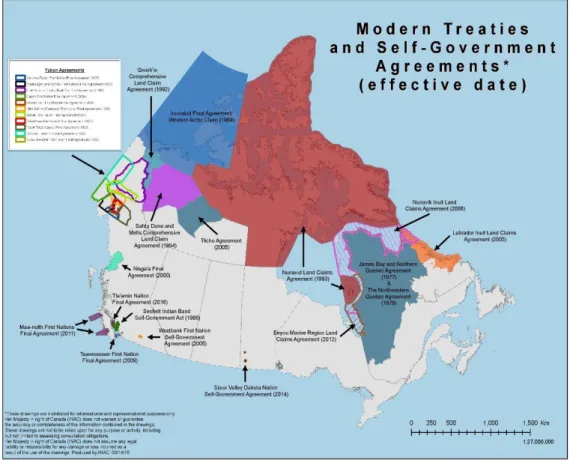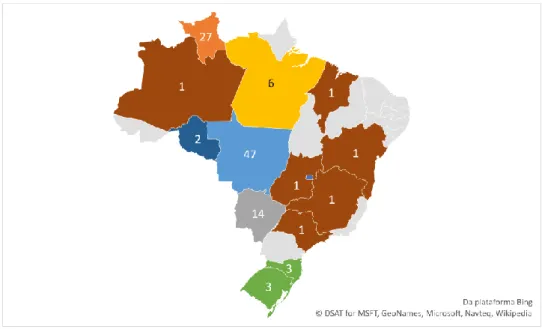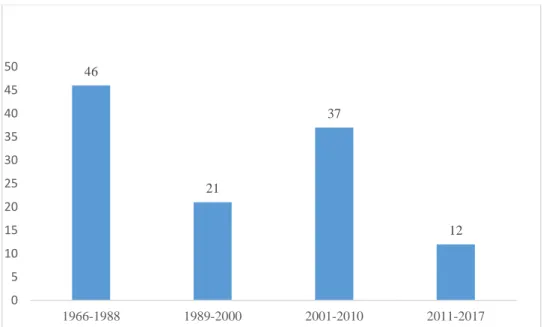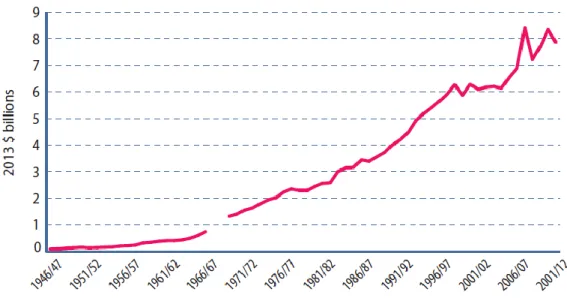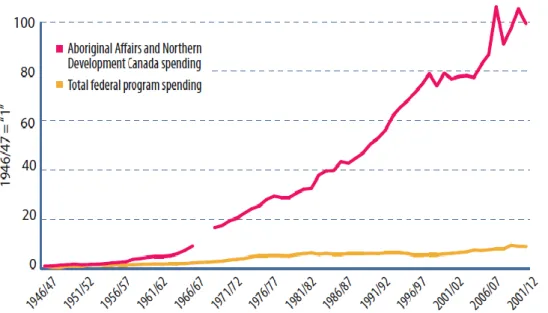Recognition of land claims12 therefore warrants investigation considering its impact on the dynamics of some of the largest countries in the world. Each of the variables will be discussed in detail in the first chapter of this thesis.
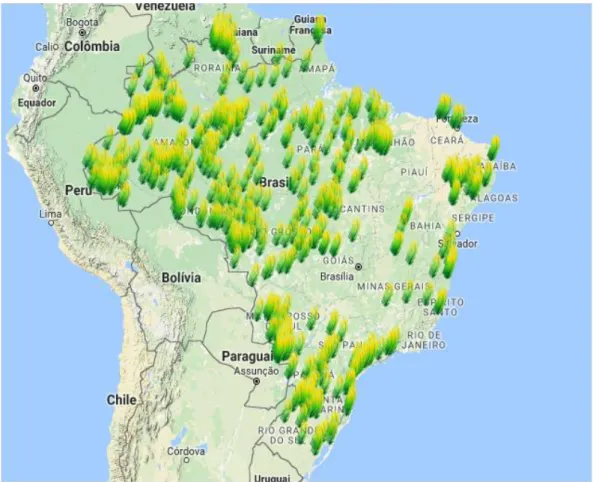
CHAPTER 1: REVIEWING THE LITERATURE: FOUR CONTEXTUAL
Factor 1: Institutional design
25 Warren (2012) argued that the cost of the decision to frame deliberative development in this way was high. Overcoming the idea of democracy as the aggregation of preferences expressed through voting, 2.
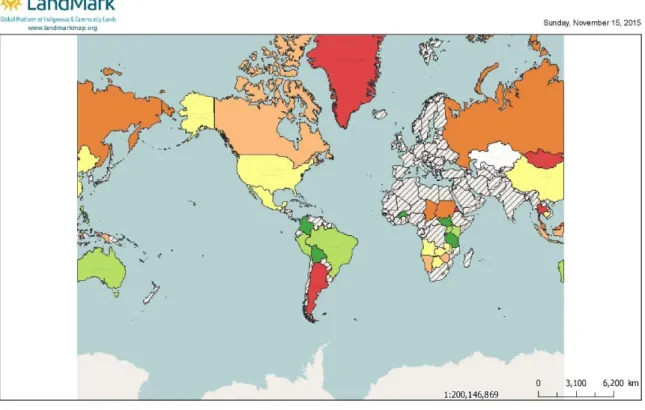
Factor 2: Federalism
Québec's contribution to Canadian federalism is a constitutional question in the broad sense of the term and contributes to the enrichment of political life in the country.”. A similar rationale applies to the Canadian case, where most of the Comprehensive Land Claim Agreements signed relate to plots of land in the Northern part of the country (MORRISON, 1992; SAKU, 2002). This pattern contrasts with the representation of the interests of landowners and mining companies in the parliaments in both countries.
No member of any of the traditional peoples of Brazil was ever elected to the Brazilian Senate. Frank Calder was the leader of the Nisga'a Nation who brought this case to the provincial courts in 1969.
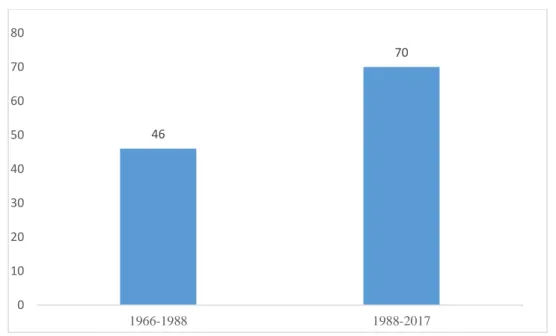
Factor 3: Government agenda
However, as shown in the topic dedicated to discussing the constitutional design in both countries, the Brazilian constitution is a hybrid of the presidential and parliamentary forms of government (CHEIBUB; ELKINS, 2009). This idea means that in both cases it is more important to understand the substantive agenda of the majority (or for that matter the agenda of the government) rather than to discuss minor differences in the formal functions of the two systems (LIMONGI; FIGUEIREDO, 2009). However, the approved budget is not the best indicator of the actual money spent on agency activities.
When the money actually spent during FUNAI's tenure was tracked, a declining pattern of investment was clearly identifiable. In the Canadian case, it is important to remember that all Canadian prime ministers elected after the Second World War – Mackenzie King, John Diefenbaker, Lester Pearson and Pierre Trudeau – were thorough Keynesians who saw the state as the main driver of economic growth.
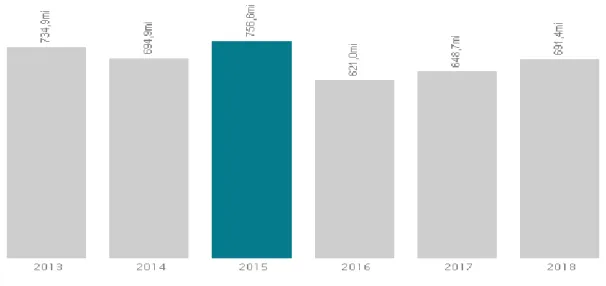
Factor 4: Native collective agency
For this reason, the actions presented on the organization's website can be considered a fairly accurate description of ethnic mobilization activities in the country. Finally, various symbolic actions are also an important part of the action repertoire of the indigenous movement. However, we are convinced that our data can be considered a fairly accurate portrait of the general tendency of the increase in the number of such associations over the past four decades.
Figure 15 below shows the evolution of the number of associations founded per year in Brazil between 1977 and 201462. Both show the same pattern of continuous growth in the number of indigenous associations during the period considered.
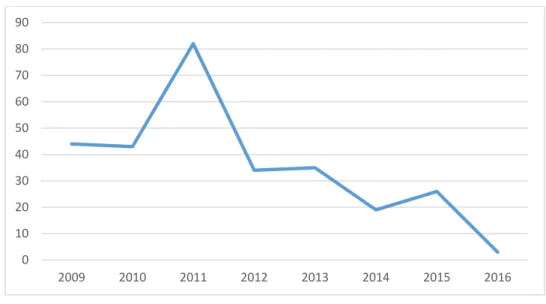
Chapter’s Conclusion
Even with some ups and downs after 1975, the general trend was increasing, reaching its maximum in the early 1990s. This chapter aimed to discuss the specifics of each variable that may affect the variation in the results explained in this thesis. A comprehensive table summarizing the main characteristics of the variations in Brazil and Canada can be found below (Table 4).
In addition, we have shown that the legalization of Indigenous politics and Indigenous policies appears to follow a conflicting pattern in both Canada and Brazil. At present, we have seen that in terms of the budgetary centrality of the Indigenous issue in both countries, while the Brazilian case demonstrates a chronically underfunded agency, federal expenditure on Indigenous policy in Canada has risen steadily since 1946.
Introduction
A turning point in the indigenous legislation of the colony was the "Diretório Pombalino" (Pombal's law, in a free translation) of 1750. The 1891 Constitution - the first of Republican Brazil - did not mention indigenous rights at all, let alone territorial rights. However, all of them arise from the original violation of the right to the land of the indigenous groups.
Later, the experiences of the participating institutions of those policies would be important for the continuous learning of the bureaucratic machine of the state by the indigenous peoples. The authoritarian regime's primary legislation disciplines all aspects of indigenous life within.
Brazil’s demarcation of traditionally occupied lands policy
According to the said report, 644 lands are awaiting the beginning or end of the land regulation process. An administrative law from the Ministry of Justice in 1996 laid down clear guidelines for the working group's report preparation. The stages of the administrative delimitation of indigenous land claims in Brazil have not changed much over the past four decades.
Then the group could invite other members of the scientific community to contribute to the report. The Indians are the prototype of the protection object of the state and of the nation.
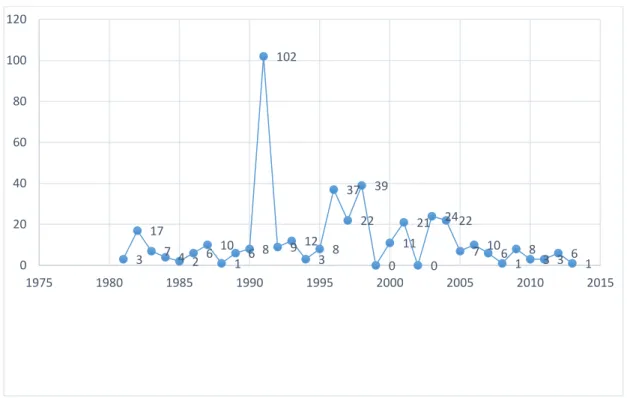
CHAPTER 3: LENGTHY, SLOW AND INEFFECTIVE: THE CASE OF THE
Introduction
From hope to despair: the Brazilian political context in the years before the
One of the key points of his platform was the alleviation of extreme poverty for a significant part of the population. 82 “Mensalão” is the nickname of a corruption scandal that involved the alleged buying of congressional support by PT politicians in 2005. Each congressional representative would be paid in monthly installments to vote according to the instructions of the government program at the time.
Moreover, in sharp contrast to Lula da Silva's approach, Rousseff's government's gradual distancing from the indigenous social movement was followed by an aggressive approach to agribusiness representatives and prominent members of the ruralist group. Katia Abreu, one of its most outspoken members, became Minister of Agriculture in 2015 and has been a tireless critic of indigenous peoples and their right to traditional lands86.
Participatory institutions and Indigenous peoples during the Workers’ Party
In other words, indigenous politics in Brazil is a political battleground where advances and setbacks are part of the daily lives of indigenous peoples and policymakers, and no simplistic assessment is allowed. However, the most important participatory institution regarding indigenous policy during the PT years in the federal government was the creation of the National Commission on Indigenous Policy in 2006, later renamed as the National Council on Indigenous Policy in 201593. In addition, indigenous peoples also had the opportunity to discuss indigenous policy at several National Conferences.
Indigenous issues were part of the discussions at the four national human rights conferences (in and 2008); the particularities of Indigenous education policy were discussed at the National Conference on Indigenous School Policy held in 2009; the two National Conferences on Race Equality (in 2005 and 2009) were also forums for discussion and for making proposals on a wide range of issues related to the daily lives of Indigenous peoples; The Ministry of Health convened a specific national conference to discuss the indigenous healthcare system, the Indigenous Healthcare National Conference in 2006; last but not least, the Indigenous Peoples National Conference, also held in 2006, was a unique experience of a national conference dedicated exclusively to the Brazilian indigenous peoples in the country's history94. The few exceptions can be found in the work of Pogrebinschi (2012), who has discussed the effectiveness of national conferences dedicated to ethnic minorities; the work of Londero (2015) who discussed the Indigenous Peoples Council in the state of Rio Grande do Sul and; Palheta's book (2015) on Indigenous participation in the design of the Indigenous Healthcare Policy System in Manaus, Brazil.
First National Public Policy Conference on Indigenous Policy
Basically, this preliminary meeting was designed to reduce information asymmetry between Indigenous peoples, government officials and other agents involved in the NPPCIP process. At these meetings, the representatives were selected who had participated in the 26 regional conferences that were mainly, but not exclusively, held in the capitals or medium-sized cities of the States97. At those times, Indigenous peoples debated with local stakeholders and government officials, presented proposals and elected representatives on the national stage of the NPPCIP.
The national stage of the NPPCIP was held in Brasília with 1500 indigenous participants from all regions and states of the country. In addition, public officials, members of the local, regional and national commissions, academics, NGO representatives, observers and invited academics.
NPPCIP under the magnifying glass: Its methodological guidelines and main
Finally, a specific proposal requested the regulation of agentes agroflorestais indígenas (indigenous Agri Forrestal Agents)110. In terms of administrative measures, the proposal requested the establishment of a human rights watchdog as part of FUNAI115. One of the proposals went on to demand the replacement of FUNAI with a Ministry of Indigenous Affairs116.
Proposals regarding cultural policies targeting indigenous peoples were also among the concerns of NPPCIP participants. One of the proposals called for adequate funding for initiatives designed to train indigenous filmmakers119.
Exploring the variables of interest
Despite the indigenous protagonism, the planning of the conference did not manage to completely bypass the political games of Rousseff's officials. Federalism: The "Illegitimate, Immoral and Illegal" Influence of the Ruralist Group in Native Politics and the Conflicting Role of the States. 167 From the original in Portuguese: “Sabia que [indigenous land claims] eram conflituosas, mas ele mediava.
In conclusion, our informants were able to show how the political influence of the rural caucus permeated indigenous politics. Other informants were sharply divergent about the role that non-indigenous organizations played in the organizational capacity of the indigenous groups and those.
Introduction
Finally, Canada was one of the first countries in the world to clearly state the existence of indigenous rights in its Constitutional text. A summary of the most important indigenous legislation and its content can be seen in table 10 below. Recognize the existence of Aboriginal title to land and the necessity of treaty making.
The Government of Canada assumes responsibility for Aboriginal groups of the new Dominion of Canada Gradual. 1876 Codify all aspects of First Nations life in Canada The Constitution expressly recognizes the existence of Indigenous groups in Canada.
Canada’s Comprehensive Land Claims Agreements Process
The first real test of the new policy was in the James Bay and Northern Quebec Agreement (JBNQA) in 1975, which serves as the precedent for today's Comprehensive Land Claims Agreements (ASCH, 2014). In addition to First Nations, there are usually many government partners involved at some stage of the negotiations. The next topic deals with the practical aspects of land claims negotiation policy in Canada, and discusses its main stages and topics.
Administrative laws can also be signed, but these laws do not have the constitutional protection of the Final Agreement. The Canadian government seeks a public understanding of the agreements and actively makes efforts to share information about these agreements.
CHAPTER 5: TOWARDS A NEW ‘SOCIAL CONTRACT’: THE CASE OF THE
- Introduction
- The winds of change: from the 1969 Statement of the government of Canada
- Zooming in the Task Force activities: participants inputs, arguments, and
- Exploring the variables used in this study
The arguments and proposals of the other participants are also considered, providing a rich and complete picture of the process. Finally, we analyze the case in light of the variables advanced in the first chapter of this thesis, and discuss their potential and shortcomings to the. It is important that the new policy emphasized the importance of the participation of the Provinces in processes of land claims settlements.
Munro, minister of the AANDC, proposed a first revision of the 1973 declaration presented in a booklet entitled "In all Fairness". There is a staunch defense of negotiation as the best procedure for reaching agreements with indigenous groups.
CHAPTER 6: CONCLUDING REMARKS: TOWARDS A RESEARCH AGENDA
Introduction
Summarizing the main findings of the research
Indigenous land claims policy: critical voices
The quest for data: a reality check on our research goals
Conclusion: towards a comparative research agenda on indigenous peoples,
